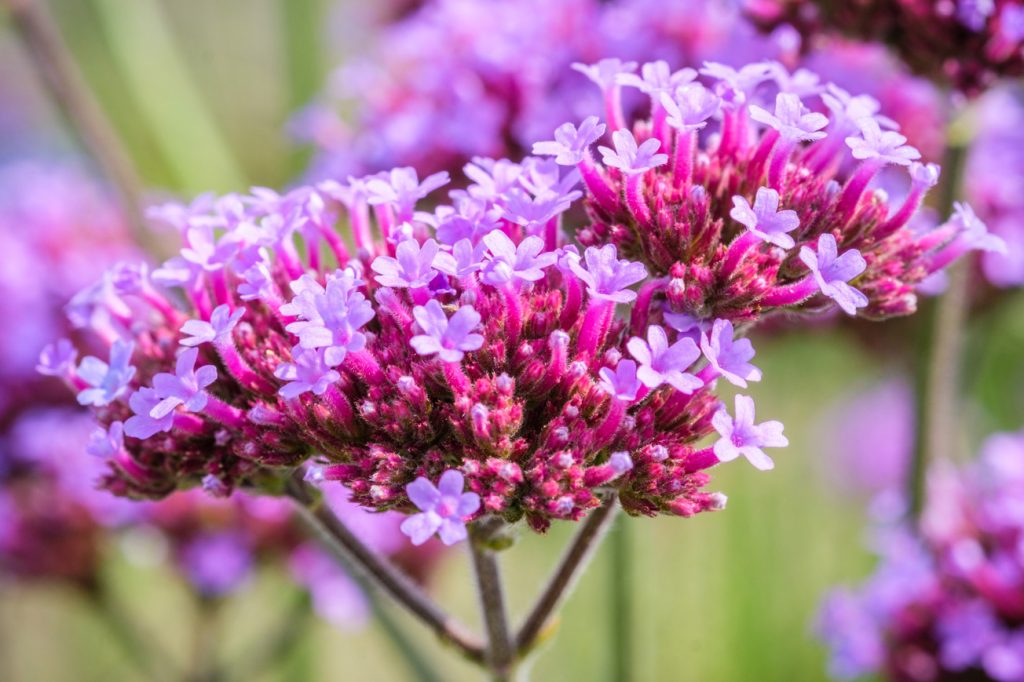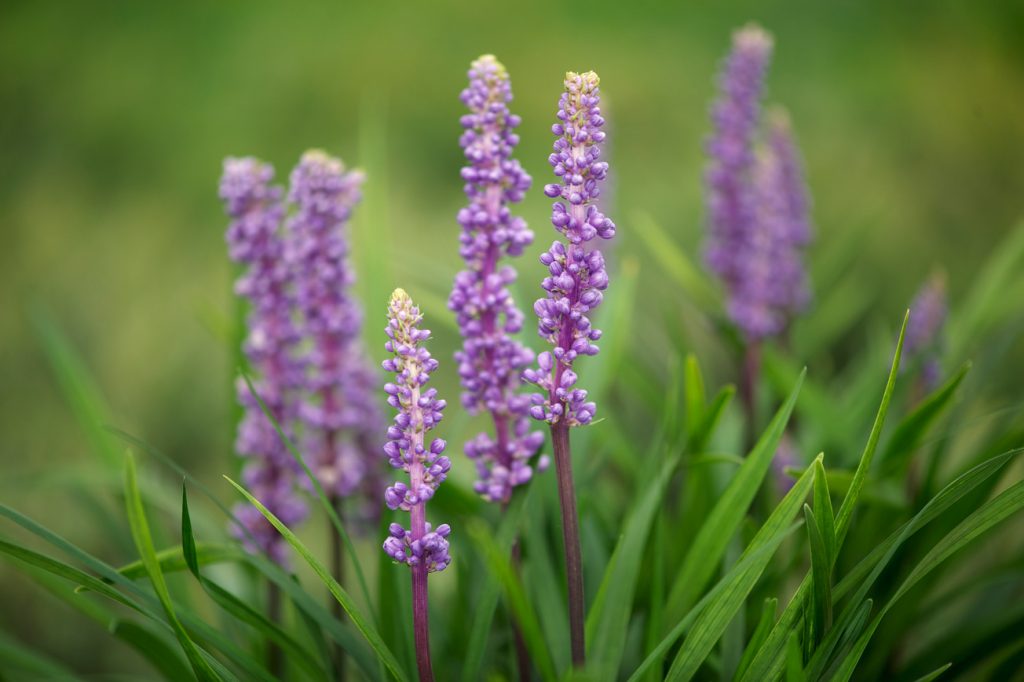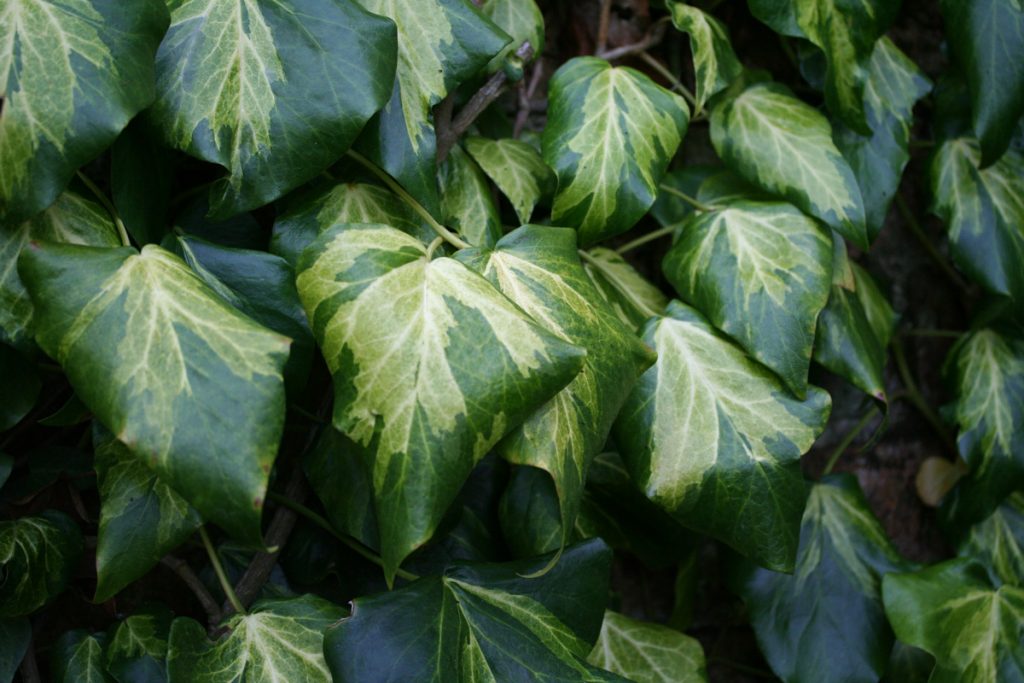Planting with Purpose
Ryan Simpson, Sales Advisor for Viridis Plants and horticulturist, explains how choosing the right planting scheme can have a massive impact on the lasting appeal of a garden design.
It is not until the plants arrive on-site that a garden really starts to come alive. Plants add softness and energy to gardens, bringing them to life with sensory delights, and transforming them into sanctuaries on your doorstep. Like any plantaholic, I can’t design a garden without a few of my favorites, such as:
Amelanchier lamarckii multi-stems – great for adding height and year-round interest, with early spring flowers. For autumn color and winter structure, it’s hard to beat!
Echinacea – with its summer color and wildlife benefits, it is an impressive addition to a planting scheme.
Verbena bonariensis – its structure brings movement and height to a scheme, and it’s popular with pollinators.
However, with all the excitement that comes with choosing a planting scheme, it’s important not to lose sight of planting with purpose. Or, more simply, putting the right plant in the right place.

Verbena bonariensis – a firm favourite with garden designers AND wildlife
Help with finding the right plant for the right place
In recent months, I have been fortunate enough to connect with designers and landscape architects online, delivering seminars on planting tips and effective watering techniques.
I’ve found that the concept of ‘right plant, right place’ is something that garden designers, landscape architects, and horticulturists feel they can always learn more about, which is why we launched the Viridis ‘Plants for Purpose’ series.
‘Plants for Purpose’ looks at common conundrums presented by everyday garden design, and tries to match these tricky problems with effective planting solutions.
Plants for dry shade
In August, we kickstarted the series by looking at Dry Shade. Dry shade is commonly found next to walls, or sometimes under a tree. We suggested: Epimedium ‘Sulphureum’, Alchemilla mollis, Euphorbia ‘Robbiae’, Geranium ‘Wargrave Pink’, Liriope Muscari and Viburnum davidii. Our goal is to find and recommend plants that will not only survive, but thrive, in these problem areas. Knowing what plants will work in these spaces means every inch of the garden can be used for lasting appeal.

Liriope Muscari – a superb plant for dry shade
Choosing the right plant for an area such as dry shade is only the first step; correctly establishing your plants is just as important. I recommend watering all plants in a way that encourages deep root systems. Water 1-2 times a week maximum, for 20-30min per plant, each time.
Planting for wildlife

Hedera colchica ‘Sulphur Heart’ an easy-going climbing plant that provides a superb home for wildlife
In September, our focus shifts to planting for wildlife. With an increasing awareness of the importance of sustainability, it is useful to consider gardens as places where we can positively contribute to wider environmental aims. Providing an inviting haven for wildlife will, naturally, increase the biodiversity of our green spaces. But it will also reduce the need to use chemicals and harmful substances.
To encourage wildlife into the garden, the following things should be provided: food, water and shelter. With these goals in mind, we would suggest: Echinacea, Prunus ‘Kojo-no-mai’, Ajuga reptans ‘Atropurpurea’, Sorbus, Hedera colchica ‘Sulphur Heart’ and Buddleja davidii ‘Royal Red’. Aim to use plants with single flowers, and anything that produces berries. These will help attract bees, butterflies and even birds, transforming your space.
Plants for Purpose from Viridis

The ‘Plants for Purpose’ series aims to cover a wide range of garden conundrums – from low maintenance plants to trees for small gardens; from perfect climbers to ideal plants for clay soil. Finding out which plants are best suited to a particular garden’s conditions will help build lasting visual appeal and wider garden impact.

Viridis offers a quality plant supply service to the domestic landscape market. Our in-house container production of shrubs and perennials is complemented by extensive sourcing capabilities. A comprehensive range of plant varieties, topiary, and trees are carefully sourced using our plant health-regulated supplier network. We are a small, customer-focused team and invite you to send plant lists for quoting.
You may also like these articles
Choosing hard landscaping materials – a guest blog from Richard Bickler of Arbour Landscape Solutions




